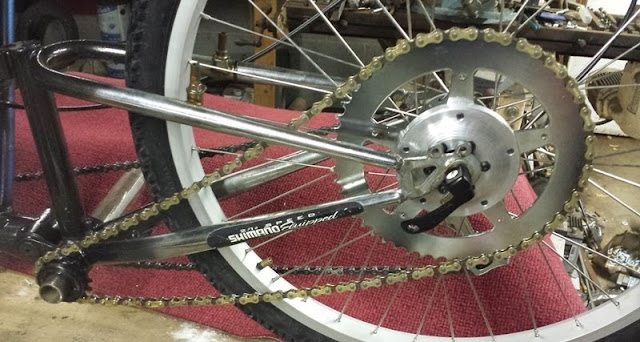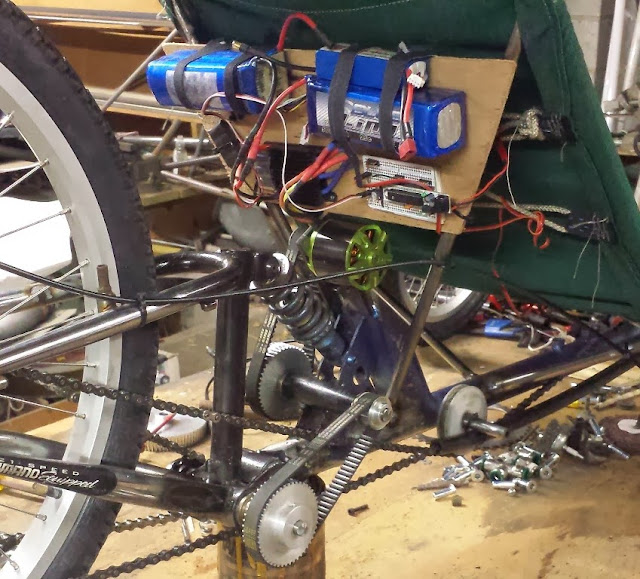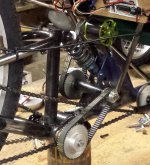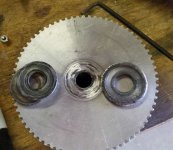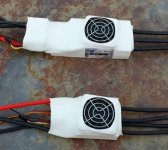yawstick
100 W
My first post here.... lots of good info here... I'm a long time recumbent trike fan and have a Catrike Speed and a home built trike as well. Some years ago I was looking at some of the hub motors but never bit the bullet. I recently happened on some videos of trikes with RC airplane type motor conversions and now have the fever for rolling my own.
I already had a 110 gas equivalent motor and going to use a two stage reduction with 5M HTD belt drive off the motor and BMX style freewheel driving a chainring mounted on the disc brake rotor mount on the rear hub. I've seen it somewhere but a recent search failed to turn up the spec for a standard disc brake rotor mounting holes. If someone could point me in the right direction on that I would appreciate it. I have ordered most of the parts to put this together but going to make an adapter for the brake rotor mount to a chainring. I have a lathe and milling machine at home and also access a milling machine at work with a digital readout that can do bolt circles, but need the size of the bolt pattern.
I already had a 110 gas equivalent motor and going to use a two stage reduction with 5M HTD belt drive off the motor and BMX style freewheel driving a chainring mounted on the disc brake rotor mount on the rear hub. I've seen it somewhere but a recent search failed to turn up the spec for a standard disc brake rotor mounting holes. If someone could point me in the right direction on that I would appreciate it. I have ordered most of the parts to put this together but going to make an adapter for the brake rotor mount to a chainring. I have a lathe and milling machine at home and also access a milling machine at work with a digital readout that can do bolt circles, but need the size of the bolt pattern.


